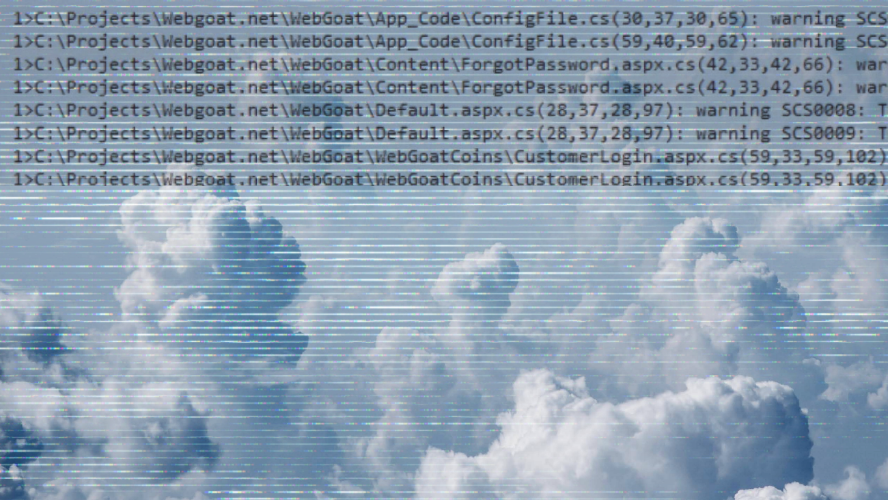Explore
Akira Ransomware
Akira ransomware represents one of the most sophisticated cyber threats in the digital landscape, targeting organizations across sectors with devastating financial and operational consequences. This relatively new but rapidly evolving threat has gained notoriety for its effectiveness in compromising critical infrastructure and extracting substantial ransom payments.
What Is Akira Ransomware?
Organizations face significant challenges when confronting Akira ransomware attacks, particularly due to the group’s double extortion tactics and technical sophistication. The threat actors behind Akira employ advanced techniques to exploit vulnerabilities in corporate networks, making detection and prevention increasingly difficult.
Proper understanding of Akira’s attack methodologies, combined with robust defensive strategies, can reduce an organization’s risk profile. Implementing comprehensive protection measures, maintaining secure backups, and developing incident response plans provide the foundation for effective ransomware defense and recovery.
Akira ransomware is a sophisticated malicious software variant that encrypts victim data, rendering it inaccessible until a ransom payment is made. First identified in March 2023, Akira targets critical business data across various sectors, with particular focus on healthcare, manufacturing, and financial services organizations.
The ransomware employs strong encryption algorithms that make decryption without the attackers’ keys virtually impossible, creating significant operational challenges for affected organizations. The threat operates on a double extortion model: Attackers not only encrypt data but also exfiltrate sensitive information before encryption, threatening to publish stolen data if ransom demands aren’t met.
This approach places victims under extreme pressure, forcing difficult decisions between paying substantial ransoms or risking both prolonged downtime and data exposure. Ransom demands typically range from hundreds of thousands to millions of dollars, requested in cryptocurrency to maintain anonymity.
Akira demonstrates remarkable versatility by targeting multiple operating environments. The ransomware can infect Windows workstations and servers, Linux systems, and virtualized environments including VMware ESXi servers. This cross-platform capability makes Akira particularly dangerous for organizations with diverse IT infrastructures, requiring security teams to implement protection measures across all potential attack surfaces.
How Akira Ransomware Works: Attack Chain
Akira ransomware attacks begin with initial network access through several common vectors. The most prevalent entry points include:
- VPN vulnerabilities: Akira operators actively exploit unpatched VPN appliances, particularly those lacking multi-factor authentication (MFA). Fortinet and Cisco VPN solutions have been frequent targets.
- Spear phishing campaigns: Carefully crafted emails containing malicious attachments or links target specific employees with access to sensitive systems.
- Stolen credentials: Purchased from dark web marketplaces or obtained through previous breaches, compromised login information provides attackers with legitimate access.
- Public-facing application exploits: Unpatched web applications, particularly those with remote code execution vulnerabilities, serve as entry points to internal networks.
Once inside the network, attackers focus on privilege escalation to gain administrative rights. They utilize legitimate administrative tools like PowerShell and Windows Management Instrumentation (WMI) to blend in with normal system activities.
This “living off the land” approach helps evade detection by security tools programmed to flag unusual software. Attackers also disable security tools, delete volume shadow copies, and modify Windows Registry settings to prevent recovery attempts.
The attack continues with lateral movement throughout the network, identifying critical data repositories and backup systems. Attackers deploy specialized tools to exfiltrate sensitive data before encryption begins, often compressing files to avoid detection by network monitoring tools. This stage typically lasts several days to weeks, allowing thorough exploration of the victim’s environment and maximum data theft.
The final phase involves deploying the encryption payload across all accessible systems simultaneously. Akira ransomware encrypts files with the “.akira” extension and places ransom notes in each affected directory.
The encryption process targets databases, document repositories, financial records, and backup files, with attackers often waiting for weekends or holidays to maximize damage before discovery. Once encryption completes, victims receive instructions for contacting the attackers through a Tor-based payment portal.
Akira Ransomware Group: Tactics and Notoriety
The Akira ransomware group operates under a Ransomware-as-a-Service (RaaS) model, providing technical infrastructure and payment handling to affiliated attackers who conduct the actual breaches.
This business model allows for rapid expansion of attack capabilities, with technical specialists developing the ransomware while affiliates with network penetration skills handle victim targeting. The RaaS approach has accelerated Akira’s growth and impact since its emergence.
Since its first appearance in March 2023 through January 2024, Akira has claimed over 250 victims and collected approximately $42 million in ransom payments and in 2024 more than 300 attacks were reported. This rapid rise to prominence demonstrates the group’s technical sophistication and operational effectiveness.
Akira maintains a distinctive retro-themed data leak site where they publish stolen information from non-compliant victims. The site features a 1980s aesthetic with neon colors and pixelated graphics, creating a recognizable brand identity within cybercriminal circles. This leak site serves as both a negotiation tool and public showcase of the group’s capabilities, often featuring samples of stolen data to verify their claims.
Akira Ransomware Recovery: Best Practices
Organizations can implement several proactive measures to help protect against Akira ransomware and help minimize potential damage. These strategies focus on preparation, detection, and response capabilities:
Immediate Response Actions
When facing an Akira ransomware attack, organizations should follow these critical first steps:
- Isolation: Immediately disconnect infected systems from the network to prevent lateral movement while maintaining evidence for investigation.
- Authority notification: Contact law enforcement agencies including the FBI and CISA to report the incident and receive guidance.
- Incident response activation: Engage internal or external incident response teams with experience handling ransomware events.
Restoration Strategies
Effective recovery from Akira attacks requires preparation and tested backup systems:
- Secure backups: Maintain offline, immutable backups that cannot be modified or deleted by attackers with network access.
- Validation testing: Regularly test backup restoration processes to verify data integrity and recovery procedures.
- Prioritized recovery: Restore critical business systems first based on predetermined business impact analysis.
Prevention Measures
Organizations can significantly reduce Akira ransomware risk through these preventive controls:
- System hygiene: Implement regular patching cycles for all systems with priority for internet-facing applications and VPN solutions.
- Authentication security: Require MFA for all remote access services and administrative accounts to prevent credential-based attacks.
- User awareness: Conduct regular phishing simulations and security awareness training focused on current attack techniques.
- Network segmentation: Implement zero-trust architecture principles to limit lateral movement capabilities for attackers who gain initial access.
- Monitoring capabilities: Deploy endpoint detection and response (EDR) solutions with specific ransomware detection rules.
These preventive measures create multiple layers of defense against Akira ransomware, addressing vulnerabilities across the attack chain from initial access through encryption stages.
Commvault Solutions
Commvault’s unified data protection platform can provide defense against Akira ransomware through multiple integrated capabilities. Our solution combines proactive threat detection with rapid recovery options, creating a resilient environment that can minimize both the likelihood and impact of ransomware attacks. The platform supports diverse IT environments including VMware, Windows, and Linux systems, providing consistent protection across hybrid infrastructures.
Advanced threat monitoring capabilities within Commvault’s platform is designed to identify suspicious activities that may indicate an Akira ransomware attack in progress. The system analyzes backup data patterns to detect anomalies such as mass file modifications or unexpected encryption, triggering automated alerts before damage spreads. This early-warning system can provide critical time advantages when responding to potential attacks.
The threat posed by Akira ransomware requires a multi-layered defense strategy combining prevention, detection, and recovery capabilities. Commvault delivers this comprehensive approach through our unified data protection platform, enabling organizations to withstand attacks while maintaining business continuity.
With robust backup protection, rapid recovery options, and continuous monitoring, our solutions provide a foundation for true cyber resilience against today’s most sophisticated ransomware threats.
The rising sophistication of Akira ransomware attacks demands a robust, multi-layered defense strategy backed by enterprise-grade data protection. Organizations need reliable, tested recovery capabilities to maintain business continuity when facing ransomware threats. A comprehensive data protection platform, complete with immutable backups and rapid recovery options, provides a foundation for true cyber resilience.
Request a demo to see how we can help protect your organization against Akira ransomware.
Related Terms
Ransomware Protection
The process of preventing ransomware events and mitigating the risk of successful attacks through security controls, backup strategies, and recovery planning.
Ransomware Protection
The process of preventing ransomware events and mitigating the risk of successful attacks through security controls, backup strategies, and recovery planning.
Air Gap Backup
A backup system that is physically isolated from the main network, creating a protective barrier that helps prevent ransomware from accessing or corrupting backup data.
Air Gap Backup
A backup system that is physically isolated from the main network, creating a protective barrier that helps prevent ransomware from accessing or corrupting backup data.
Cleanroom Recovery
A specialized recovery process that enables secure retrieval of critical data in an isolated environment following a ransomware attack or other security breach.
Cleanroom Recovery
A specialized recovery process that enables secure retrieval of critical data in an isolated environment following a ransomware attack or other security breach.

Ransomware 101

The Ransomware Solution Your CISO Will Love
